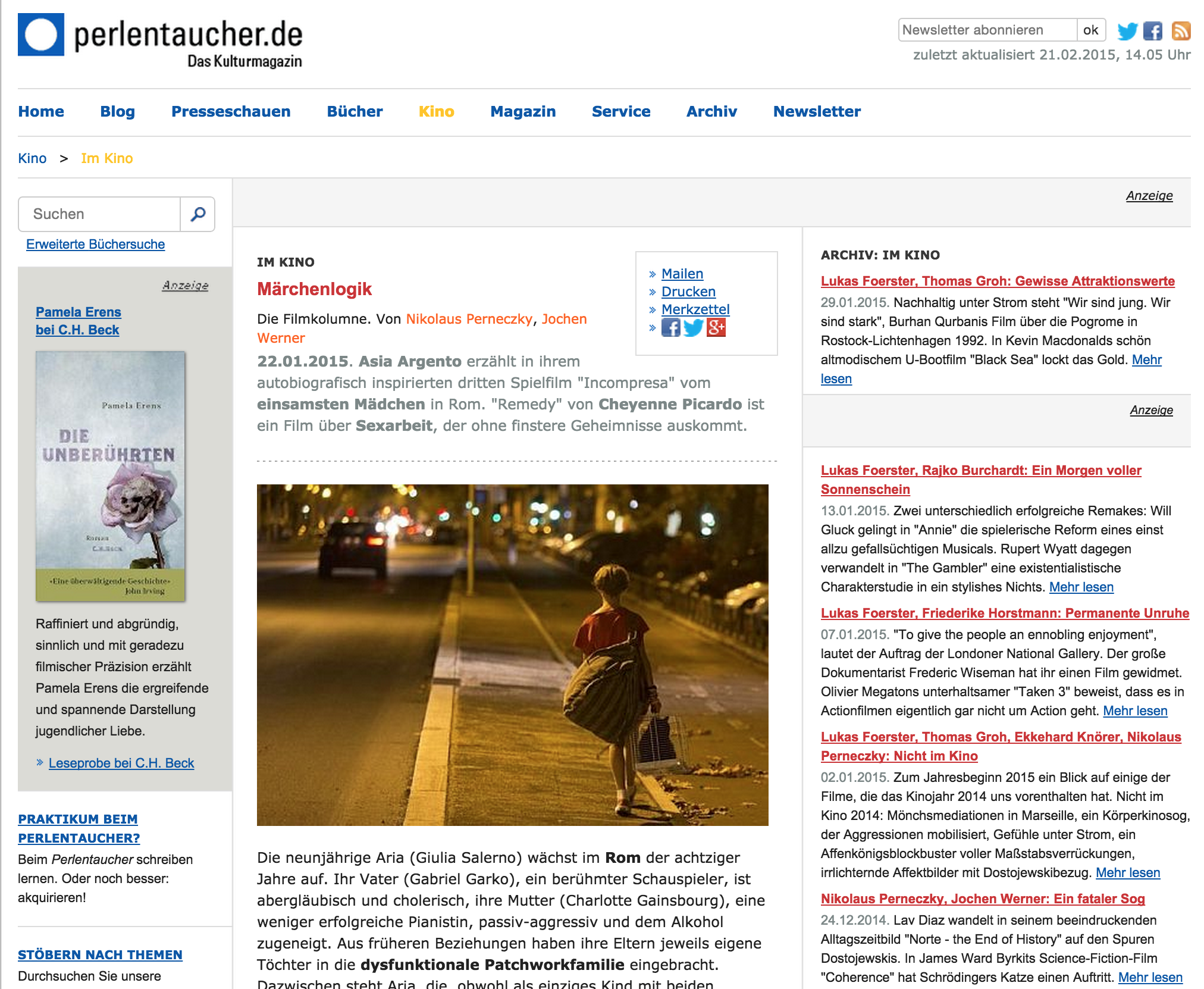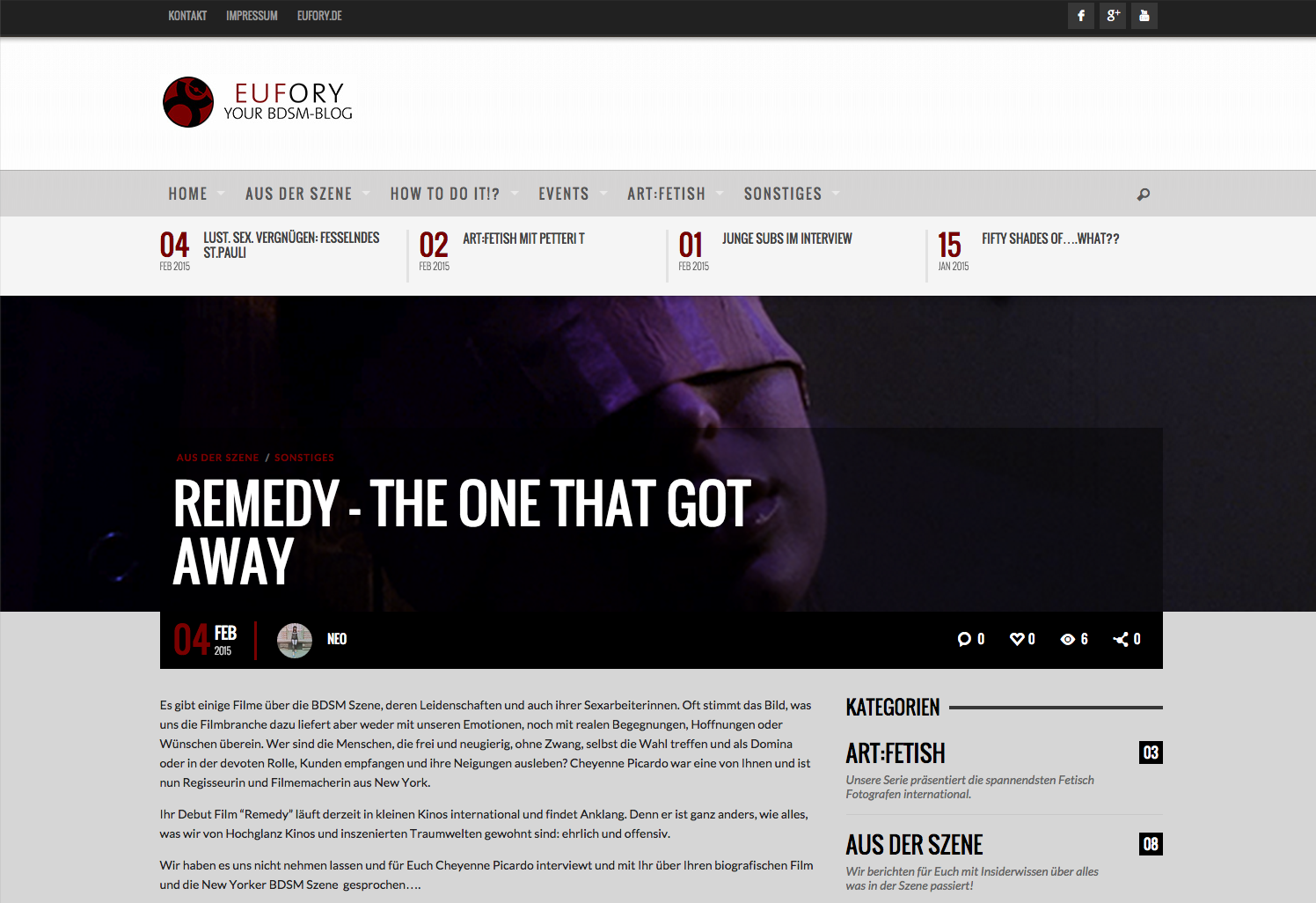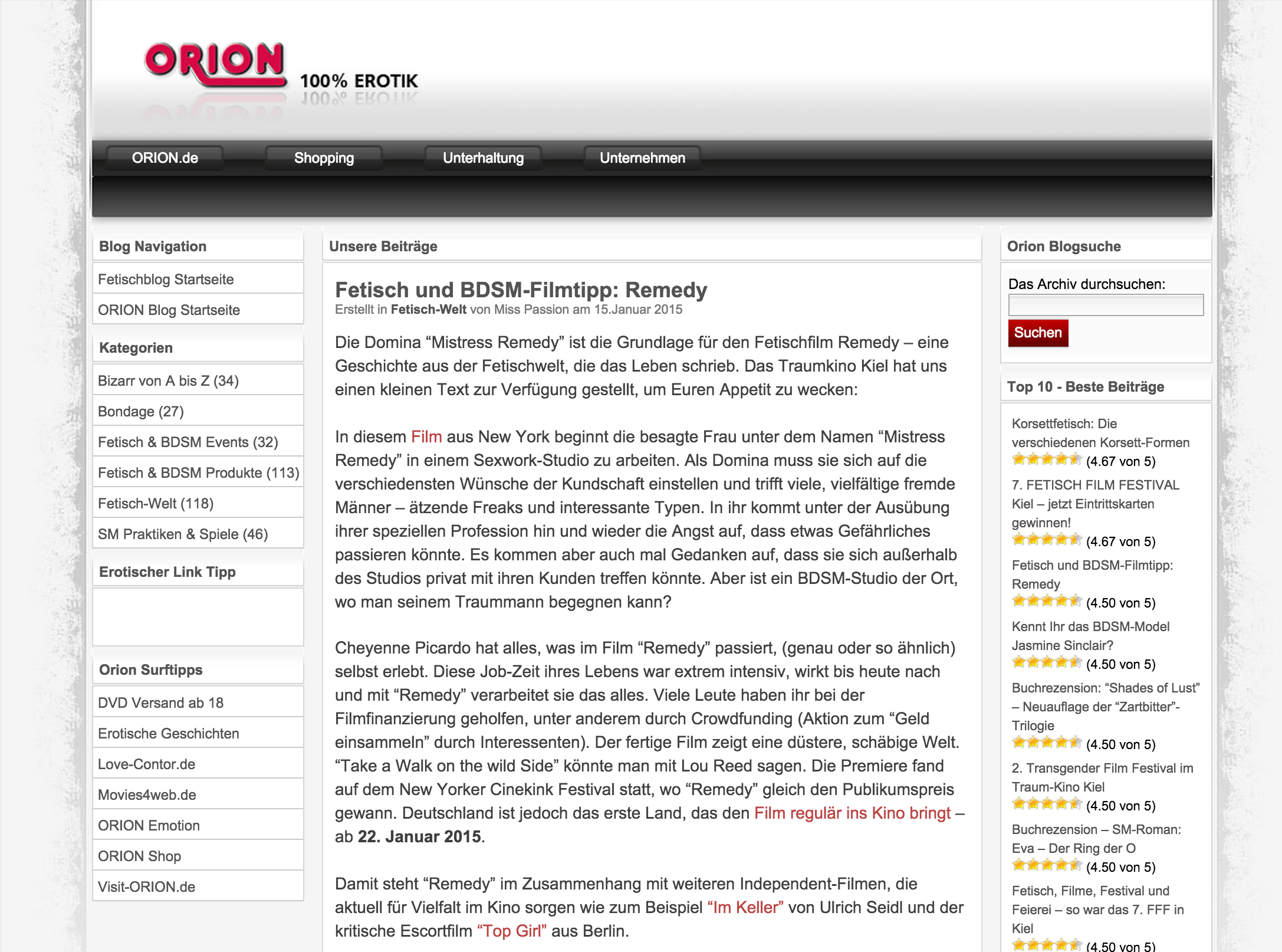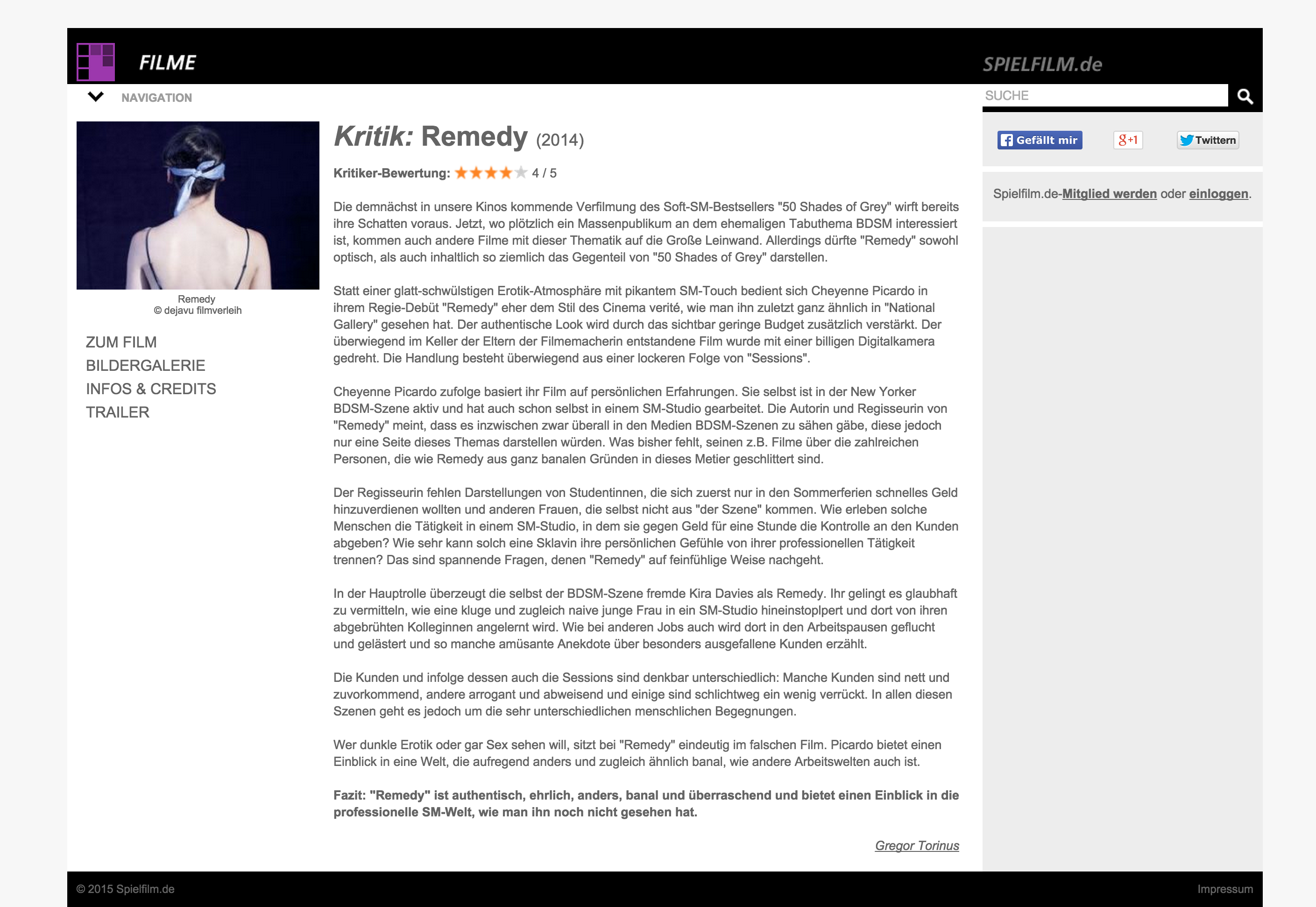Review in Perlentaucher.de (with English Translation)
Click here to read the review in the original German.
“Remedy” by Cheyenne Picardo is a film about sex work that succeeds without dark secrets
These days, when looming shadows in 50 shades of gray are poised to introduce sadomasochism not just to housewife-literature but also to blockbuster cinema, at the periphery of all the hype a substantially more raw and less polished film is about to arrive in German theaters. First-time U.S. director Cheyenne Picardo is familiar with the material she describes, since she presents her own story with that of Remedy. Like her protagonist, who calls herself “Mistress Remedy”, Picardo spent 18 months—while studying at film school—as a sex worker at an S&M brothel; and in spite of all cliches that tend to stubbornly accompany cinematic treatments of prostitution, no dark secret lurking in the shadows is at the root of this. When Remedy is asked what prompted the idea she answers simply, someone told her she’d never dare do it.
A slight and trivial reason to temporarily become a prostitute; but that exactly is the point; and these days in which the PorNo! campaign is eagerly exhumed while the human rights of sex workers are trampled with enthusiastic self-righteousnessness, it’s an important point. Sex work as a service-industry profession, with some highlights and an (in no way glossed-over) shadow side as well, but not a tragedy overshadowing one’s entire biography—that’s the story Picardo tells in Remedy with the full weight of lived experience .
This does not mean that Remedy is some kind of formally illiterate piece of confessional cinema. You can tell that Picardo’s debut originates from a precarious place with its budget partially scraped together using crowd-funding—in fact, Remedy is nearly a one-woman production: Picardo directed, produced, wrote the script, edited the film and even sang the song used for the opening credits. Her lofty filmmaking ambitions constantly find their way into the film’s structure and formal aspects, however. Remedy is structured as a series of S&M sessions that reflect the full spectrum of her everyday work experience: From outlandish, funny episodes of the sort that recently brought attention to Lene BErg’s great sex-work documentary “Kopfkino”, to encounters offering true personal affection and romantic potential, to sexual power games that gradually and apparently inevitably teeter toward actual danger.
The decision not to present these sessions as incidental to a concurrent story of psychological development , but as a crucial narrative tool, has far-reaching ramifications for the tension sustained by the movie. This is not just a film that wants to talk about sex and foregrounds sex for this reason—and even less so a film using its sexual content as a decorative element. Instead Cheyenne Picardo aims to turn various sexual constellations into the actual medium used to drive the narrative. Via the succession of johns and the sessions experienced by Remedy as either the dominant or submissive party, a definite narrative development can be detected. This type of narrativizing of the sex act itself represents the highest aspirations of the sex-film genre, and for long stretches Picardo is extraordinarily successful at pulling off this tight-rope act.
Admittedly, tightening some of its mid-section might have benefited the two-hour movie. But even this is mitigated by Picardo’s direction that seeks out not just atmospheric, but also varied and diverse images, including a penchant for split-screen mosaics. And besides, the waiting, the apparent killing of time, the enduring of uncertainty and repetition, silence and stillness, are integral parts of every successful sadomasochistic performance whose rhythms shape the deeper structure of Remedy. (Jochen Werner)
(Translation by Nina Gielen)





